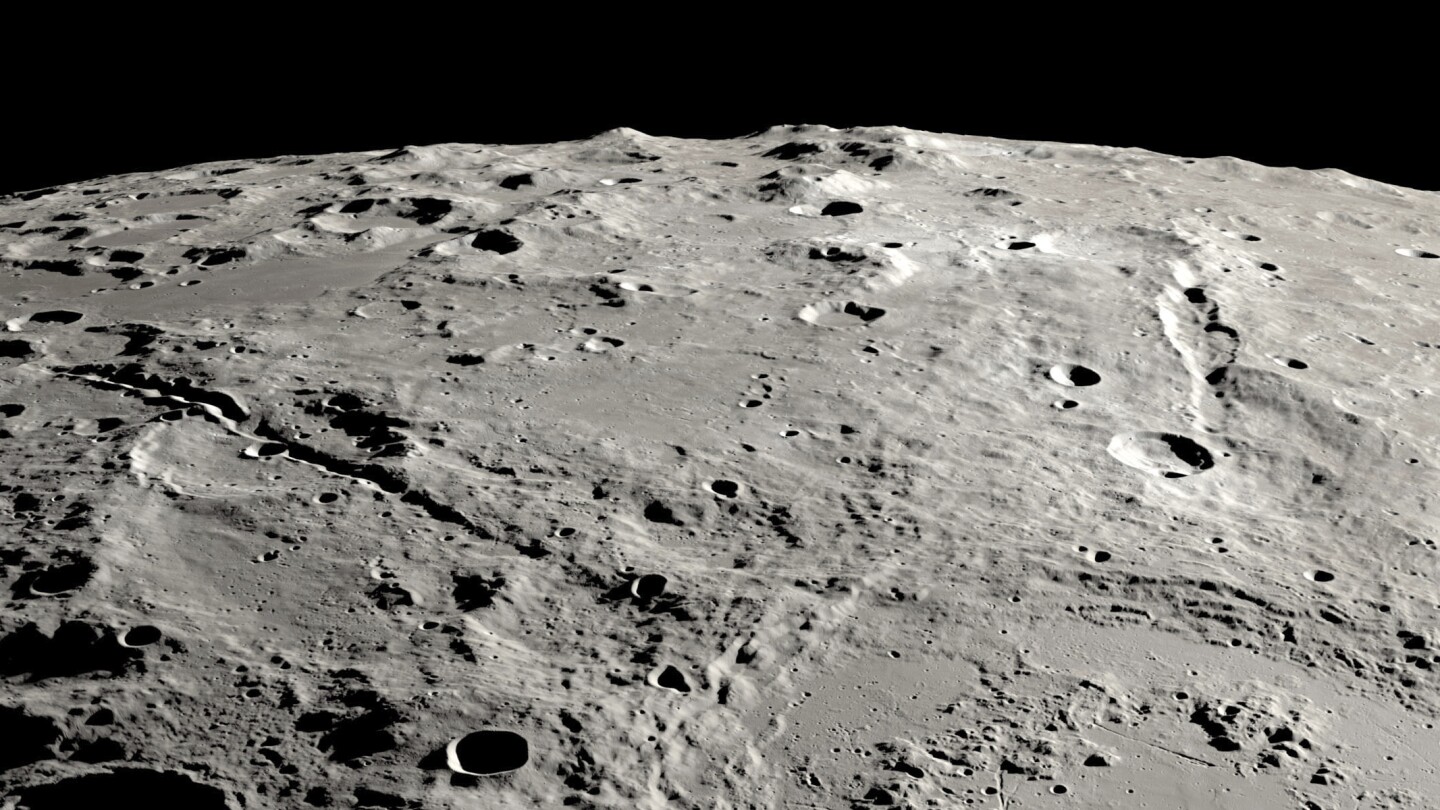Science
How an ancient asteroid strike carved out 2 grand canyons on the moon

Unveiling the Moon’s Ancient Past: A Violent Collision and Its Lasting Impact
An Ancient Collision Reshapes the Moon
Billions of years ago, a colossal asteroid, measuring 15 miles across, slammed into the Moon, leaving behind a testament to cosmic violence. This impact, more powerful than 130 times the world’s current nuclear arsenal, carved out two massive canyons on the lunar far side. The debris from this collision, traveling at nearly a mile per second, dug out these canyons in mere minutes, a process that would take the Grand Canyon millions of years. This discovery, made possible by NASA’s Lunar Reconnaissance Orbiter, not only reveals the Moon’s tumultuous history but also offers insights into Earth’s origins, as the Moon is believed to have formed from debris after a Mars-sized body collided with Earth.
A Violent Geologic Event: The Asteroid’s Fury
The asteroid’s impact was a fleeting yet ferocious event, unleashing unimaginable energy. In about 10 minutes, it created canyons comparable in size to the Grand Canyon, a stark contrast to the millions of years it took for the latter to form. This catastrophic event sent boulders hurtling across the Moon’s surface, shaping its geology in an instant. The discovery highlights the Moon’s dynamic history, where violent events have played a crucial role in its formation.
Implications for Exploration: A Window to the Past
The impact’s aftermath has proven fortunate for NASA’s Artemis program, which aims to return astronauts to the Moon. The debris from the collision was largely expelled away from the south pole, preserving older rocks around this region. These ancient rocks, exposed and intact, offer scientists a rare opportunity to study the Moon’s early history and, by extension, Earth’s formation. This exploration zone, on the Moon’s near side, is now a prime target for future missions.
The Science Behind the Discovery: Mapping the Moon’s Past
U.S. and British scientists utilized data from NASA’s Lunar Reconnaissance Orbiter to map the Moon’s surface and trace the trajectory of debris from the ancient impact. This meticulous research, published in Nature Communications, reveals the asteroid’s path and the resulting geological formations. The study demonstrates how advanced technology and rigorous analysis can uncover the Moon’s hidden history, providing a blueprint for understanding similar events in our solar system.
Permanently Shadowed Regions: Hidden Resources
The Moon’s south pole features regions perpetually shrouded in darkness, where water ice may exist. This resource could be crucial for future missions, offering a source of oxygen, drinking water, and rocket fuel. While the canyons from the asteroid impact may hold ice, their shadows are still under investigation. Unlocking these regions’ secrets is vital for sustaining human presence on the Moon.
NASA’s Artemis Program: Paving the Way for the Future
NASA’s ambitious Artemis program aims to return humans to the Moon by the mid-2020s, with plans for a lunar base. The discovery of ancient rocks and potential ice reserves supports these goals, highlighting the Moon’s role as a stepping stone for deeper space exploration. As astronauts prepare to set foot on the Moon again, this research not only enriches our understanding of the Moon’s past but also charts a course for its future as a hub for scientific discovery and adventure.











